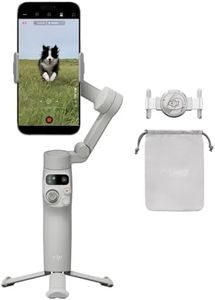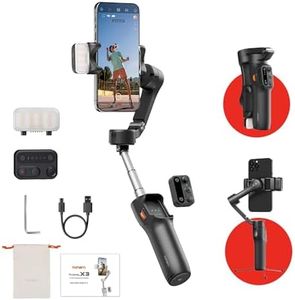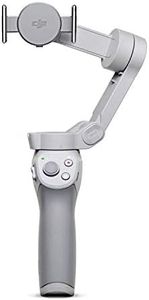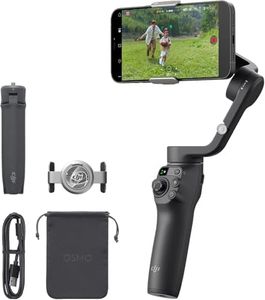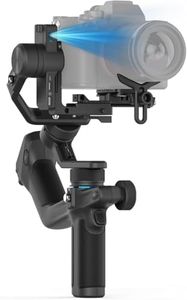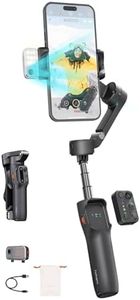We Use CookiesWe use cookies to enhance the security, performance,
functionality and for analytical and promotional activities. By continuing to browse this site you
are agreeing to our privacy policy
10 Best Phone Gimbals
From leading brands and best sellers available on the web.Buying Guide for the Best Phone Gimbals
Choosing the right phone gimbal can make a huge difference if you want smooth, professional-looking video footage with your smartphone. A gimbal stabilizes your phone, reducing shake and jitter when you’re moving or filming, and often adds features like tracking, time-lapse, or remote control. With so many options available, it’s important to focus on the essential specs and match them to your filming needs, whether you’re an occasional family documentarian, a social media enthusiast, or working on more polished video projects.Stabilization AxesStabilization axes refer to the directions in which the gimbal can steady your phone. Most phone gimbals offer either two-axis or three-axis stabilization. Two-axis gimbals steady up/down and left/right movements, while three-axis gimbals also stabilize rotational or twisting shakes, providing noticeably smoother footage. If you’re just walking and filming basic scenes, two-axis may suffice, but for best results—especially with lots of movement or more cinematic shots—a three-axis gimbal will give you a more professional and steady outcome.
Payload CapacityPayload capacity means the maximum weight the gimbal can support. This is important because if your phone (especially with a case, or if you attach external lenses or microphones) is too heavy, the gimbal might not function properly or even get damaged. Light phones can work fine with almost any gimbal, but larger, heavier phones need a higher payload capacity. Always check the weight of your phone (plus any accessories you plan to use) and ensure it’s within the gimbal’s supported range for smooth performance.
Battery LifeBattery life tells you how long the gimbal can operate on a single charge, typically measured in hours. If you plan to shoot outdoors, travel, or work on longer projects, a longer battery life means less worry about recharging. Gimbals usually range from a few hours up to over ten hours on one charge. If you record long video sessions or don’t want to carry a charger around, go for a gimbal with longer battery life. For quick clips or casual use, shorter battery life may be enough.
Weight and PortabilityThe weight and how portable the gimbal is matters if you’ll be carrying it for extended periods or traveling. Lightweight, foldable gimbals are easier to slip into a bag and carry around, making them ideal for travel or daily casual filming. Heavier or bulkier models may offer more features or stronger motors, but they can be tiring to hold for long and harder to pack. Think about how and where you’ll use your gimbal—if it’s mostly on-the-go, prioritize lighter, more compact options.
App Features and CompatibilityMany phone gimbals work with special apps to unlock advanced features like face tracking, time-lapse, panorama, or gesture control. Not every gimbal offers the same features, and not all apps work well with every smartphone. Before choosing, check what features matter to you—like active tracking for vlogging, or cinematic shooting modes—and make sure both the gimbal and its app are compatible with your specific phone model. If you love experimenting with effects, an advanced app can greatly enhance your shooting experience.
Control OptionsControl options include how you operate the gimbal—usually through physical buttons, joysticks, or by using the companion app. Some gimbals offer programmable buttons, trigger locks, or hotkeys for quick switching between modes. Simple controls might suit beginners or those who want to just point and shoot, while more advanced options give experienced users more creative control. Consider how much manual control you want and choose a gimbal with the button layout or control scheme that feels comfortable and intuitive to you.

